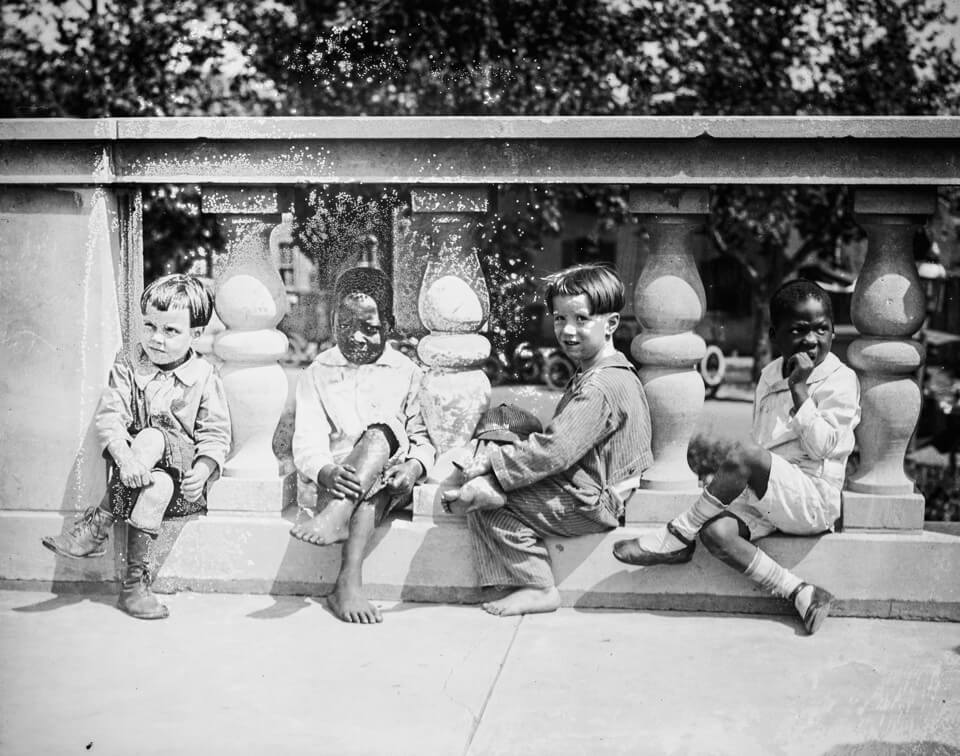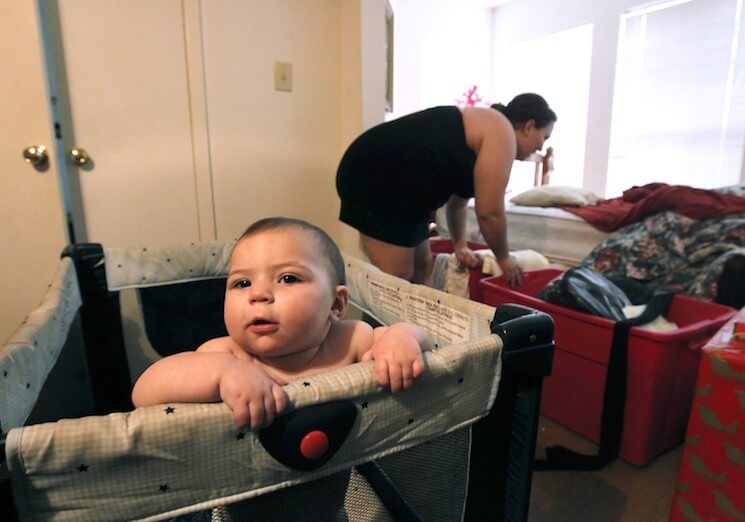Overview

“Equitable Growth in Conversation” is a recurring series where we talk with economists and other academics to help us better understand whether and how economic inequality affects economic growth and stability.
In this installment, Equitable Growth Executive Director and chief economist Heather Boushey talks with Raj Chetty, the William A. Ackman Professor of Public Economics at Harvard University and the director of Opportunity Insights, which uses “big data” to understand how we can give children from disadvantaged backgrounds better chances of succeeding. Chetty’s research combines empirical evidence and economic theory to help design more effective government policies. His work on topics ranging from tax policy and unemployment insurance to education and affordable housing has been widely cited in academia, media outlets, and congressional testimony.
In a highly informative conversation, Boushey and Chetty discuss:
- The reasons for “lost Einsteins” in the United States
- Different rates of geographic and economic mobility in the United States
- The connections between research on mobility, research on patents and innovators, and research on race
- The changing face of absolute mobility in the United States
- The importance of U.S. administrative data in economic research
- The new research areas that would help us understand the effects of inequality in our economy and our society
[Editor’s note: This conversation took place in the spring of 2018.]
Heather Boushey: Thank you so much, Raj, for doing this interview with us today.
Raj Chetty: Yes, absolutely. And thanks, Heather, for the opportunity to talk with you.
The reasons for ‘lost Einsteins’ in the United States
Boushey: I want to ask you first about the problem of the “lost Einsteins.” In a recent paper that you did with a long list of fantastic co-authors, you find a lot of variation in the likelihood of children of seemingly similar talent becoming inventors. From the research, it looked like a child’s gender and their parent’s income matter quite a bit. Can you talk a little bit about what the mechanism is here? What does the research tells us about why this happens?
Chetty: The starting fact in our paper on lost Einsteins is that there are sharp differences in the rates at which children become inventors—as measured by having a patent—by their parental income level, by their race, and by their gender. And one of the hypotheses as to why you see those very sharp differences is that perhaps there are differences in underlying talent or interest in innovation across these subgroups. For instance, maybe kids from high-income backgrounds just have greater skills in becoming inventors.
But it turns out that when we measure “talent” as best as we can, examining skills early in childhood using things such as math test scores, we find that even among kids who have comparable technical skills, there are vast gaps in their probability of becoming inventors due to their socioeconomic background, their gender, and their race and ethnicity.
Our leading hypothesis, and there’s evidence to support this, is that this about differences in environmental exposure to innovation. We document that kids whose own parents are inventors or who grew up around a lot of inventors in the neighborhood in which they grew up tend to be much more likely to go into innovation themselves.
And that pattern holds, not just in terms of whether you go into innovation or not, but also actually in terms of the exact type of innovation you pursue. To give you an example, let’s take two kids who are currently at the Massachusetts Institute of Technology in Boston. One of them grew up in Silicon Valley which, of course, has a lot of information technology innovation, and another grew up in Minneapolis, which has a lot of medical device manufacturers. It turns out that the kid who grew up in Minneapolis is much more likely to patent and invent in medical devices. And the kid who grew up in Silicon Valley is much more likely to patent in computers. Even though they both, currently, are in Boston.
More generally, that holds across all fields. The nature of innovation that you pursue is greatly influenced by what you’re exposed to as a child. And that holds, not just in general, but also actually by gender, so women who are exposed to a lot of female inventors while they’re growing up are more likely to become inventors themselves—but not if they’re exposed to male inventors.
And so, based on the sort of evidence, let me come back to your initial question: What’s driving these gaps? There are large differences in exposure to innovation. How aware are you of innovation as a potential career path? How do you see yourself fitting in as an inventor? Can you see yourself being in someone else’s shoes as an inventor? Kids from low-income backgrounds, kids from minority families—they are just much less exposed to innovation. We think that’s one key driver of this phenomenon of lost Einsteins: children who could have gone on to become great inventors, but end up not doing so simply because they don’t have exposure to innovation.
Different rates of geographic and economic mobility in the United States
Boushey: I want to switch, now, to your work on geographic variation and mobility. This work has gotten so much attention that I feel like almost everywhere I go, I see somebody popping up a map or talking about this work. One of the things that is particularly fascinating is that it’s not just about people with different rates of mobility living in different places. It’s that there’s real variation in the causal impact of place on mobility. Can you walk me through that and then talk about how we know about these causal impacts, how they’re created, and what policymakers might be able to do here?
Chetty: There’s a lot of variation in children’s chances of climbing the income ladder across areas where they grow up. And, as you pointed out, a key finding that has emerged from this research is that variation doesn’t just arise because different types of people live in different places. It’s actually that if you take a given child and put that child in, let’s say, Salt Lake City or San Francisco, both of which have high rates of upward mobility, you get very different outcomes than if that same child grew up in a place such as Cleveland or Charlotte, where we see much lower rates of upward mobility.
The way my co-authors and I reached that conclusion is by looking at children who move across areas. We use a randomized experiment called the Moving to Opportunity experiment, where families got housing vouchers to move to different areas through a randomized lottery. And we see that kids who, by luck, won this voucher to move to lower-poverty, higher-opportunity areas ended up having much better outcomes in adulthood. This proves that it’s really the causal effect of the neighborhood that’s driving these differences in upward mobility.
In other related work, we looked at 7 million families that move across counties in the United States and showed that the earlier you get to a high-mobility area in your childhood, the better you do in adulthood. Again, this corroborates that where you grow up really matters.
So, there is a key question that emerges from this finding that place matters for upward mobility: What does that mean in terms of how we can improve upward mobility for people who currently don’t live in high-opportunity areas? And I think there are really two approaches you can think about.
One is what you might think of as a choice-based approach, where you give families the choice to move to higher-opportunity areas through programs such as affordable housing, housing vouchers, and assistance in moving to higher-opportunity areas. And we think that that can be quite a powerful way for at least some subset of families to really improve children’s outcomes in a way that’s proven to work.
The challenge, of course, is you can’t move everyone. Moving to opportunity is not a scalable policy, really. And so, ultimately, you need think about how to improve opportunity in what are currently low-opportunity areas. Figuring out how to do that is actually quite a challenging problem, and one that we and others are continuing to study.
But there are some clues about how to replicate the recipe for success in high-mobility areas. What might be going on is that areas that are more segregated, for instance, by race or by income tend to have lower rates of upward mobility. Areas with weaker primary schools and areas with less social capital or weaker family structures tend to have lower levels of upward mobility. These clues give us some sense of the types of factors we might try to address. For instance, one way may be to try to combat residential segregation by changing laws to try and improve the quality of our local public schools. I think these types of things could, potentially, be quite valuable in improving upward mobility.
The connections between research on mobility, research on patents and innovators, and research on race
Boushey: Do you see any connection between this research and the research on patents and innovators?
Chetty: Yes. There certainly is a connection between the two strands of research. Places that tend to have higher upward mobility, in general, also tend to produce more inventors. So, there’s a correlation between the two things. You might think of innovation as one specific pathway to upward mobility.
Now, the two are not identical. So, for instance, you take a place like Silicon Valley, at least for kids who grew up in the 1980s and ‘90s, and you find bowtie upward mobility that produced a lot of inventors. But then, you take a place like Detroit, which actually turns out to have relatively low rates of upward mobility but somehow produces quite a few inventors.
We think there are some common forces that play into both problems such as segregation, the quality of schools, and so forth. But then there are other specific factors such as proximity to inventors that are a little bit different between these phenomena. I would say the common theme in both things is childhood environment, which really seems to influence long-term outcomes.
Boushey: Talk a little bit more about this issue of economic mobility and the question of race. In some recent work, you’ve shown that black men experience far less opportunity for economic mobility than do white men, regardless of what income level they’re born into. I take from the research that you’ve done that it appears discrimination is really dragging down economic growth. Can you talk about how that ties into your mobility work, as well as your innovation work?
Chetty: Yes, certainly. Racial disparities are, of course, widely known and have been studied for a long time. The angle my co-authors and I bring in this recent study looks at socioeconomic positions from an intergenerational mobility perspective. If you take a black child and a white child, both of whom start out in the same social or economic circumstances growing up in a family with a given income level of, say $40,000 a year, then how do their prospects of moving up across generations look compared to each other?
It turns out, even above and beyond the factors that we’ve already talked about, race really matters. Black kids, and black men in particular, have much lower chances of climbing the income ladder, and have much higher chances of falling down, of experiencing downward mobility, relative to white kids.
For whites, intergenerational mobility looks like climbing an income ladder across generations. For blacks, unfortunately, it’s more like being on a treadmill. Every generation that climbs up, even once they’ve reached the top of the distribution, black men are more likely to fall back toward the middle or even the bottom of the income distribution.
In order to tackle racial disparities in America, we really need to understand how to change this process of intergenerational mobility, how to create more upward mobility among black kids.
Now, naturally the question is why we have lower rates of mobility among blacks than whites. One dominant hypothesis is the possibility of racial discrimination, either explicit or implicit, because of biases that have been built up over the years. And there is some evidence in the data that is supportive of that view; in particular, areas of the country with less racial bias tend to have higher rates of equitability for black men.
But it’s important to note that there are other factors at play as well. We find that neighborhoods with a greater presence of black fathers, with the fathers in the home raising black kids, tend to have better outcomes for black boys as well—and black boys in particular, not black women or white men.
There’s a very tight and particular correlation between the presence of black fathers and the outcomes of black men. What is that telling us? I think it could be something about role model effects, or differences in social norms, and areas where there are more black fathers present.
But stepping back a bit, I think even that mechanism could tie back to structural factors such as discrimination or incarceration policies. For example, it’s fair to ask why it is that there are some neighborhoods, many neighborhoods, where lots of black fathers are absent. I think mass incarceration or discrimination in the labor market leads to adverse outcomes for black men, which can then transmit to the next generation.
The changing face of absolute mobility in the United States
Boushey: I want to discuss your results about the trends in absolute mobility, or the chance that a kid, a child, will earn more than their parents when they grow up and become an adult.
You and your co-authors document that absolute mobility fell from the 1970s to today, and over that time period, economic growth slowed down and inequality rose. But one of the findings of your research is that inequality plays this really important role in the decline in absolute mobility. Could you walk us through that?
Chetty: Our finding, just to start, is that kids’ chances of earning more than their parents have fallen from something like 90 percent for kids who were born in the 1940s through to their mid-30s in the 1970s. That has fallen to 50 percent for kids who were born in the 1980s and are in their mid-30s today.
What’s the driver of that trend? Well, at the macroeconomic level, there are two major things that have happened. One is that Gross Domestic Product growth rates have fallen by about 1 percentage point over the most recent 30 years relative to the middle of the past century. And second, the economic growth that’s occurring is much less equally distributed. The growth that’s occurring, and it’s been well-documented, is accruing much more to people in the top 1 percent of the income ladder relative to the average American.
Both of these factors could potentially contribute to the decline of absolute mobility. It’s very easy to understand why lower growth rates would lead to less upward mobility. Imagine the extreme case where we have no economic growth. Then, of course, it’s going to be harder for kids to do better than their parents. And so, we pose the question, suppose we have the same growth rates today as we did in the 1950s, the 1960s, the era of very high economic growth in the United States. Suppose we had those growth rates but we shared the economic pie in the same way that we do today, with the people at the top of the distribution getting a much larger slice of that economic growth. What would rates of absolute mobility look like in that hypothetical exercise?
It turns out the answer is that rates of upward mobility would be higher than they are at present, but not all that much. Rather than having 50 percent of kids earning more than their parents, we’d have something like 60 percent or 65 percent of kids earning more than their parents. In contrast, imagine another thought exercise where we have the same growth rate as what we’ve had over the past 30 years, but we now divide the economic pie in the way that we were dividing it in the 1950s and 1960s. Under that scenario, rates of absolute mobility would go up to something like 75 percent or 80 percent—closing not all but nearly all of the gap relative to what we’re seeing in the 1950s and ‘60s.
Based on this analysis, we conclude that the key driver of the decline in absolute mobility—the fading of the American dream, if you’d like—is really the reduction in changes in the distribution of growth. That growth is much more unequally distributed today than it was in the past, and I think that ties back to some themes we touched on earlier in the conversation.
Kids from lower-income backgrounds are no longer experiencing the same prospects of moving up in the income distribution and getting those pay raises that people at the bottom were getting in the past and that could relate to some other factors we’ve already talked about such as increasing segregation and a deterioration in the quality of schools.
The importance of U.S. administrative data in economic research
Boushey: I have two more things I want to get to in the time we have available. The first one: You’ve done a lot of work with what we could call big data or administrative data, data from tax filings, patent records, and school test scores. Could you just spend a couple minutes telling us what kinds of opportunities data such as these open up for economists and other researchers, and what dataset you wish you could get your hands on or you wish that you could get in the hands of your graduate students? And my second question: What do you think is the next frontier here for data-driven research?
Chetty: As much as we hear about big data being used to improve the products that companies offer—companies such as Amazon and so forth—analogously, our vision is that these data hold tremendous promise in understanding social and economic policy questions. Many of the results I’ve been describing on racial differences, intergenerational mobility, and how your neighborhood affects the chance of becoming an inventor require enormous datasets.
We get that information from de-identified datasets held by the U.S. Treasury, the U.S. Census Bureau, and from databases such as patent records and school district records. All of these are administrative databases in the sense that we’re not going out and surveying people to collect that information. These are data that are maintained by administrative agencies for programmatic purposes. It turns out they also have incredible scientific value. And I want to emphasize that we’re, of course, not tracking any one person in these analyses. These are statistical aggregates of thousands of people using de-identified data.
But those statistical aggregates are incredibly useful in understanding the broad tendencies that we want to tackle from a policy perspective. So, I think it’s absolutely fundamental in order to improve policymaking in the United States and other countries to maintain and expand access to such data—of course, maintaining security and privacy to the utmost standards, but making that feasible and available for researchers.
Now, to your question about what data would be great to get going forward, I see a couple of major limitations in the U.S. data infrastructure at the moment. One is we don’t have great administrative data on issues related to health. So, typically, when people study health using administrative data, it’s focused on very crude measures such as mortality. We’d like to be able to study in a much more detailed way how health conditions and health behaviors vary in the populations so we can figure out how to improve health and type of health in equality. So, that’s one major area for potential progress.
Another area for progress is data on consumption and wealth. We tend to have very limited data about what people are consuming and how much people are saving in the United States. And again, you can imagine constructing datasets that would allow you to do that kind of financial research in ways that would be very illuminating, given growing wealth inequality in the United States.
What new research areas would help us understand the effects of inequality in our economy and our society?
Boushey: That’s a nice segue into my last question. You served as one of Equitable Growth’s founding Steering Committee members, and we’ve been very grateful for your support. And you know all about our competitive grants program through which we fund academic research. I am always on the lookout for the big important questions or trends that we need more research on. Could I end this interview by asking you what are the one or two research areas that you think could use a lot more attention or support that are important for understanding the effects of inequality in our economy and our society?
Chetty: Well, I would say at a big-picture level we still don’t know as much about the mechanisms that drive differences and economic progress and economic mobility, differences in inequalities across areas and across subgroups. Let’s take a specific example of what we were discussing earlier, on racial disparities. We’re able to document with great precision that there are stark racial disparities. We’re able to identify some areas where we see smaller disparities and larger disparities, but we know much less about specific policy interventions that could lead to meaningful change and that are scalable.
So, you might have one experiment in one area or another that happens to show some effect, figuring out in a really precise scientific way that there is something that’s proven to work that we can do on a national scale that would meaningfully address racial disparities. Perhaps not close these gaps in one shot—that’s too much to expect—but make a really meaningful change for black men or on a variety of other topics we’ve discussed. I think a focus on mechanisms is really the next step in this type of research, and I hope of lots of people will be working on that because those are very challenging questions.
More broadly, thinking about some of these issues not from the perspective of a single individual but from a societal equilibrium perspective can be extremely valuable. Let me give you an example. We talked about moving-to-opportunity policies, for instance. What we’ve been able to do so far is show is that if we help a family move to a better area, that family has much better outcomes. That’s very useful to know, but from a social point of view, what we really want to know is, does that improve things on aggregate, or do other indirect effects, perhaps, mitigate the gains that this one family gets?
For instance, you might worry that if we help one low-income family move out of a low-opportunity area, do they simply get replaced by another low-income family who moves into that area, so we have essentially a musical chairs phenomenon where we’re shuffling people around without really improving things in the aggregate?
Economists would call this sort of thing trying to understand the equilibrium effects of how things play out in general that could have been. Empirical research has recently mainly been focused on identifying individual-level effects. But trying to figure out how things play out in equilibrium is a very challenging problem, which, I think, is something we should have on our agenda to focus on going forward.
Boushey: Those sound like good marching orders for us. Thank you so much for your time. This has been just really fascinating, and thank you for all this really terrific research that’s helping us understand mobility and these important issues.
Chetty: My pleasure Heather. And thank you for all your support.
Related
Explore the Equitable Growth network of experts around the country and get answers to today's most pressing questions!






